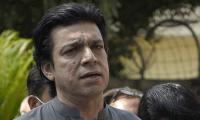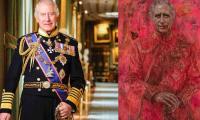In Pakistan, there has been increasing interest and academic curiosity about the growing role of China as an ‘aid provider’. An analyst has even termed China as a “new leader on [the] foreign aid front”. An article published in a local newspaper states that “since the turn of the century, China is estimated to have disbursed nearly as much aid as the [US]”.
While there is no doubt that China has emerged an important development actor within the global landscape, it is grossly misleading to categorise all Chinese financial flows as ‘aid’. The article states that the “total Chinese foreign aid between 2000 and 2014 of $354.3 billion to 140 countries and territories was not far behind the US total of $394.6 billion”. It further adds that: “Pakistan is likely to displace Russia from its top position of Chinese aid recipients as Islamabad is expected to consume as much as $60 billion of Chinese flows between 2017 and 2027”.
While I have no doubt about the veracity of these facts, terming all these financial transactions ‘aid’ or ‘development cooperation’ is conceptually flawed. First of all, China itself, until recently, had tried avoiding the word ‘aid’ and ‘donor’ as these terms evoke the North-dominated discourse of externally-driven, donor-led international development cooperation. Contrary to this, China considers itself a developing country that is pioneering and advocating the principles of the South-South Cooperation (SSC). The SSC is defined as “the mutual sharing and exchange of key development solutions – knowledge, experiences and good practices, policies, technology and resources – between and among countries in the global South”.
The key principles of the SSC are respect for sovereignty, non-interference, non-conditionality, horizontality, flexibility and innovation. Ideologically and theoretically, the SSC is different from development cooperation provided by Western aid donors, which is mostly driven by elements of self-interest along with various economic and political conditions. In contrast, the SSC is a form of international development cooperation whereby “two or more developing countries pursue their individual or collective development through [the] cooperative exchange of knowledge, skills, resources and technical expertise”.
The SSC concept gained international recognition in 1955 during the Bandung Conference that brought 29 African and Asian leaders together in Indonesia. It has been used for decades as a basis for academic research and voluntary cooperative efforts between southern countries to promote South-South trade and investment. Following the historic Bandung Conference, the SSC was intended to be a movement that challenged the northern-dominated political and economic systems. But the concept “has been through a series of starts and stops, surges and retreats”.
However, it has received considerable attention in recent years, mainly on account of the shifting geostrategic and economic realities with the rise of China, India and Brazil. Among these actors, China is in the lead with its resources and political will and the decision to launch the One Belt One Road (OBOR) initiative is a clear example of this. However, it is evident from the financial model of the OBOR initiative and its constituent in the form of CPEC in Pakistan that China’s overall development package is an ‘investment-grant-loan’ model of financing. Hence, in the context of its increasing role in international development, the key aspect of the Chinese model and mode of transnational development cooperation is not purely ‘aid’ per se.
According to the White Paper, the last policy document of this nature that was made public by Beijing in 2014, between “2010 [and] 2012, China appropriated in total 89.34 billion yuan ($14.41 billion) for foreign assistance in three types: grant (aid gratis), interest-free loan and concessional loan”. As explained earlier, unlike traditional or Western aid-providers, in the case of China’s development-financing, aid, trade and investment are seen as interconnected and the boundaries between aid per se and trade and investment have been blurred. Instead of looking at aid exclusively and separately from other modes of development-financing – as is the case with traditional Western donors – China’s development cooperation follows the investment-grant-loan or aid-business-trade model as it combines all three into one strand.
This model of development-financing has its own limitations. Unlike the Development Assistance Committee (DAC) of the Organisation for Economic Cooperation and Development (OECD) – an elite club of donors which has established and refined key definitions and concepts about the measurement of aid and its effectiveness – China and all other SSC-providers lack well-defined parameters. Critics argue that one of the key issues with the SSC is the lack of transparency about their aid volumes and interventions in various sectors and countries as currently there is no standard reporting or measurement mechanism that could inform us about its efficacy and effectiveness.
A clear conceptualisation as well as the institutionalisation of the SSC could play a critical role in internal and external accountability as well as in a better analysis and comparison among the SSC actors. Although the overall development-financing from the non-DAC donors has increased significantly and it is estimated that an aggregate of $33 billion was provided by 29 non-DAC aid-providers in 2014, the fact remains that “discussions around defining, accounting and reporting [the] SSC flows are still inconclusive and present a vast diversity of views and approaches”.
Another issue is that unlike the traditional or OECD donors, China (and to some extent other non-DAC donors as well) has not set up a special and independent aid agency to deal with all aid-related decision-making. According to Chinese experts and academics, the Ministry of Commerce plays a central role in the formulation and planning of foreign aid policy and the approval of aid-funded projects along with 20 other ministries, including the Ministry of Foreign Affairs, the Ministry of Finance, the Ministry of Health and the Ministry of Agriculture.
Within the Ministry of Commerce, a specific body called the Department of Aid to Foreign Countries (DAFC) has been created to deal with the management of foreign aid affairs and liaisons with other government ministries involved in international development. Owing to the involvement of various government ministries, it is argued that the Chinese aid system is at the “transitional stage” as the presence of various state bodies and departments not only blur the lines between aid and other development-financing – including investments, trade and state loans – but also results in coordination issues.
Despite these conceptual issues and institutional challenges, there is no doubt that on account of its capacity as well as its political will and ambition, China is going to become a dominant player in the field of international development cooperation, with a flexible mix of aid, investment and concessional loans. The UN and various other international organisations have stressed the need for increased public and private financing from traditional Western donors and new emerging donors to fill financing gaps in numerous countries in Africa, Asia and Latin America to enable them to make real progress towards the 2030 Agenda and the sustainable development goals (SDGs). Reports have further added that the increased contributions from the SSC would play a significant role in “poverty eradication and sustainable development”.
In the face of the growing development challenges, ‘aid’ itself is of limited potential unless it is complemented by other sources of financing. It is because the burgeoning trade and investment opportunities bring new technology, more “jobs, infrastructure, innovation and social services”. In the long run, trade and investments result in “larger tax revenues and more income for households who, in turn, will spend more on health and education”. Thus, the Chinese model of development cooperation, which comprises a mix of aid-trade-investment, could play a critical role in economic development as long as transparency is ensured regarding the terms of financing and the modus operandi of the procurement and bidding of projects.
The writer is a postdoctoralresearch fellow at the GermanDevelopment Institute at Bonn, Germany.
Email: muradali.uom@gmail.com
China stands ready to work with Pakistan to implement the important consensus reached by the leaders of both countries
The first thing is to build schools two kilometres apart on either side of the Indus
Theme for World Migratory Day 2024 focused on role and relationship of insects in our ecosystem for migratory birds
There is a prime minister but everyone, including him, knows that he has no mandate to sit on that high-backed chair...
There is also a need for reforms to ensure new trends are adopted and more preference is given to local industries,...
The most recent economic data provides a detailed and subtle view of Pakistan’s financial situation







